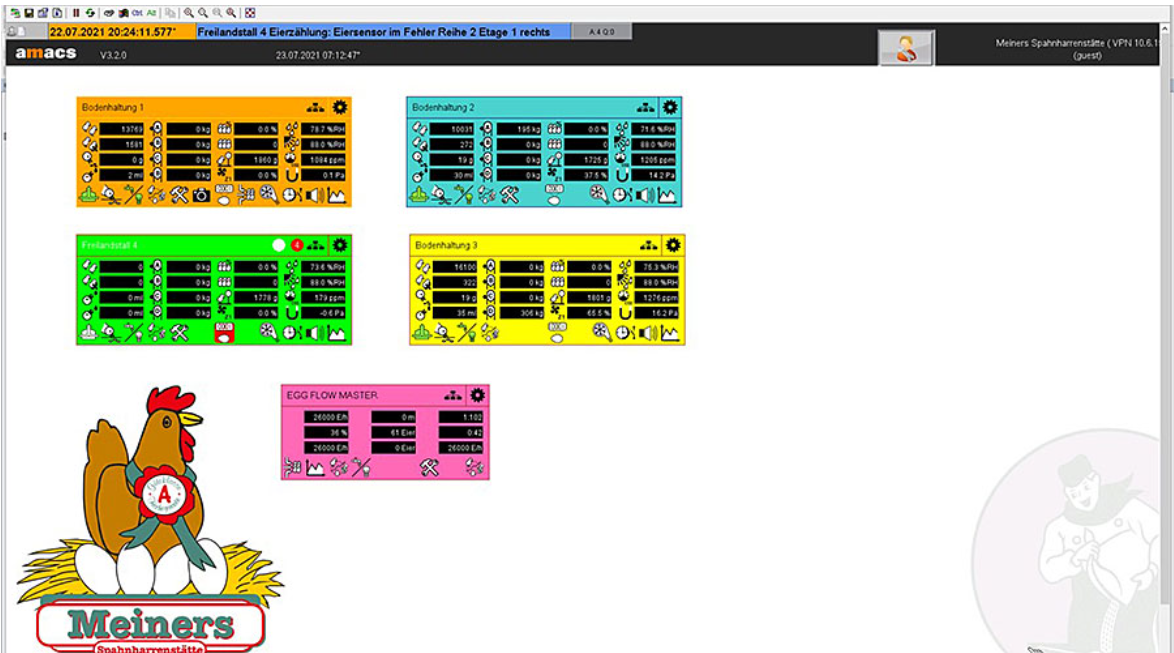



Egg production: How to manage need-based feeding of laying hens with amacs and split feeding control
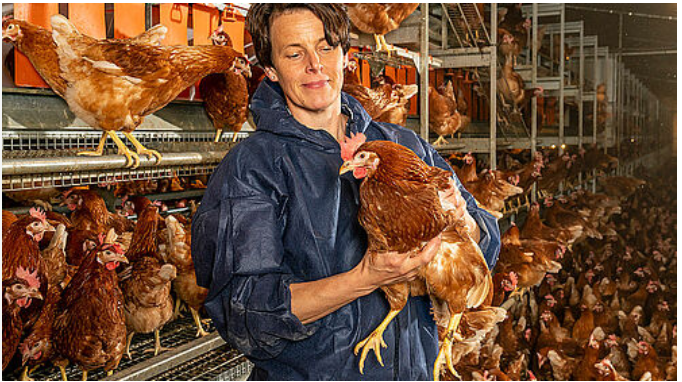
It’s all about the egg at the Meiners poultry farm in Spahnharrenstätte in the German Emsland region near the Dutch border. The farm has been family-owned for three generations and houses 50,000 layers. Stefanie Meiners-Funke, a certified poultry farmer, manages the birds and ensures that everything runs smoothly in the barns. Her husband, Hans-Albert Funke, is a big fan of technology. Even without any training in egg production, he is very interested in the control system and has become an expert over time.
Always open to innovation, Stefanie Meiners-Funke recently switched her poultry houses to the split feeding concept, with support from Big Dutchman and feed producer ForFarmers. In line with this concept, the hens are supplied with feed twice a day, but receive different feed types with every feeding process.
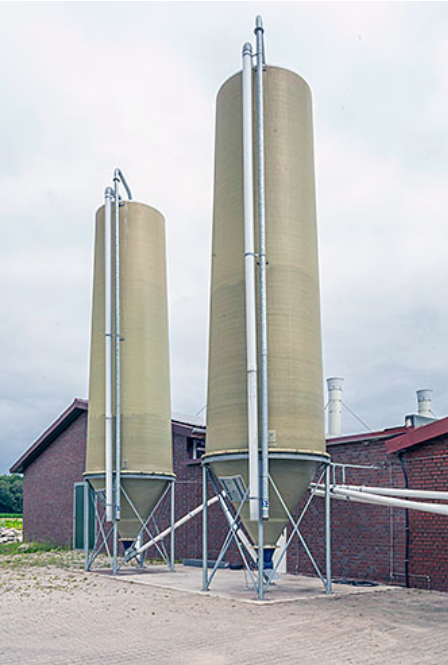
“The split feeding concept meets my hens needs even better. This is definitely an improvement regarding animal welfare, and also financially,” says Stefanie Meiners-Funke.
The feeding process is controlled by the Big Dutchman management system amacs. The newest feature in the amacs feeding module is split feeding control. Hans-Albert Funke puts it in a nutshell when he says that operation of the software is “foolproof”.
In an online interview, the married couple provides details about the advantages of the feeding concept and split feeding control, and reports on everyday life in the poultry houses. ForFarmers feed consultant Fabian Simons and Big Dutchman product managers Christian Kalkhoff and Bernd Heidkamp were also present for the interview. Christian Kalkhoff asked the questions.
Split feeding-concept in egg production
Can you briefly explain the concept to readers who don’t know what split feeding means?
Stefanie Meiners-Funke: The hens are fed in the morning and in the afternoon. The morning feed, which accounts for 40 % of the daily ration, influences the content of the eggs. The remaining 60 % affect the growth of the egg shell.
What is the difference between the two feed types?
Fabian Simons: The morning feed has increased energy, protein and phosphate contents and is well digestible, that is, it passes the intestines faster. The afternoon feed is rich in fibres and calcium, but low in phosphorus.
What effect does this type of feeding have?
Stefanie Meiners-Funke: The right feed is in the birds’ stomach at the right time. An example: If the hens were given high-energy feed in the afternoon, they would excrete it without making use of it. Moreover, it’s hard to digest.
In the end, the difference to us humans is not so great. The food we consume in the morning is different from what we eat before going to sleep. This is logical and makes sense because it makes us feel better.
Does split feeding pay off?
Stefanie Meiners-Funke: For sure! After all, feed is THE cost driver in egg production.

Layers
How did your laying hens react to the new feeding concept?
Stefanie Meiners-Funke: Very well. The hens have been more agile since the switch. Their intestinal health and metabolism have improved, making them happier overall. It’s fun to watch!
In addition, the hens’ bone density is higher, which means that the sternum is stronger and the feet are more stable. There is clearly a connection between split feeding and more animal welfare.
Fabian Simons: And we know from experience that the bird weights remain stable.
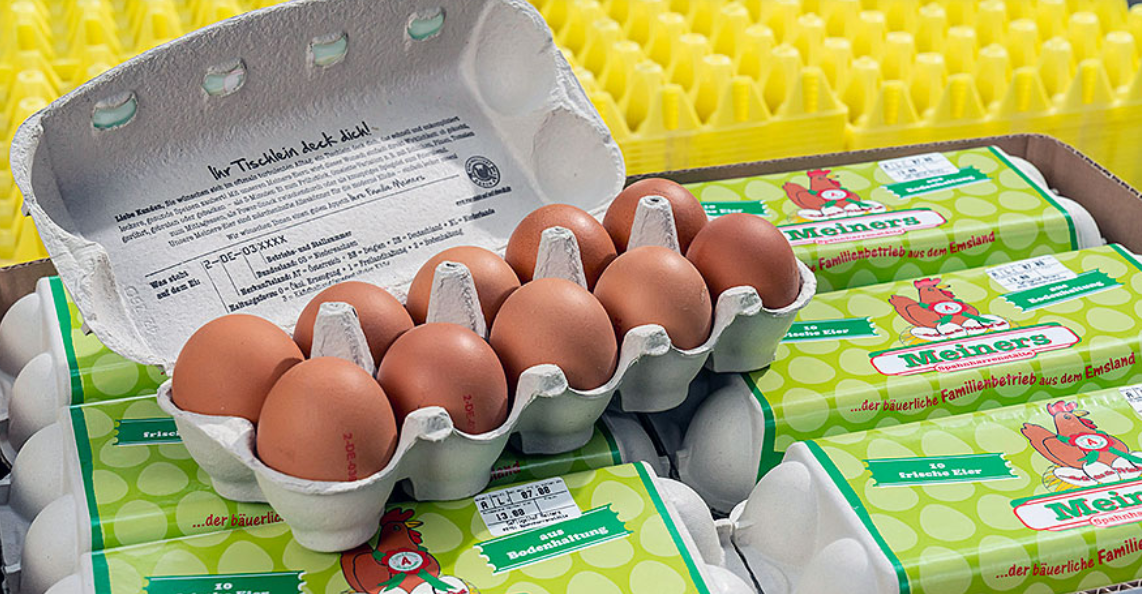
Have the birds been laying more eggs since the switch?
Stefanie Meiners-Funke: That’s hard to say. What I have observed, however, is that I can keep the hens on the farm for a longer period. One reason is that they moult faster thanks to the increased calcium intake.
After the moult, they continue laying proper XL eggs. :-)
Eggs
How does split feeding affect the eggs?
Stefanie Meiners-Funke: The quality of the egg shell is better because I add the important calcium component exactly at the time when the egg shell is formed.
Fabian Simons: The shell is about ten percent stronger. This means that the eggs remain well saleable for a much longer period.
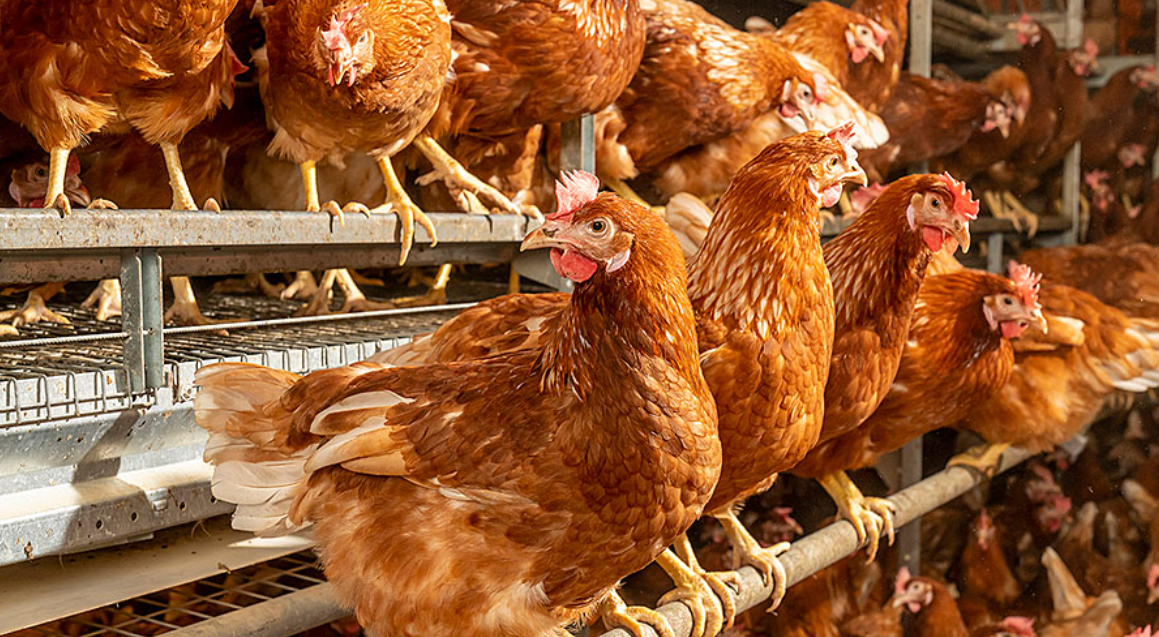
Can you see any “side effects” of split feeding in egg production?
Hans-Albert Funke: Yes. The climate situation in the barn is better. The birds consume less water, the manure is drier and the litter is clearly better. As a result, there is less ammonia in the barn.
amacs
How do you like the new amacs software?
Hans-Albert Funke: A lot! As a user, you only need to know the right feed quantities for your birds; amacs automatically calculates the switching times so that all hens always receive the same feed.
If parameters are modified, the changeover is completed by the next day at the latest. The birds always have the right feed in the beak.
The system also automatically responds to changes in the eating behaviour. This becomes very obvious on hot summer days, for example.
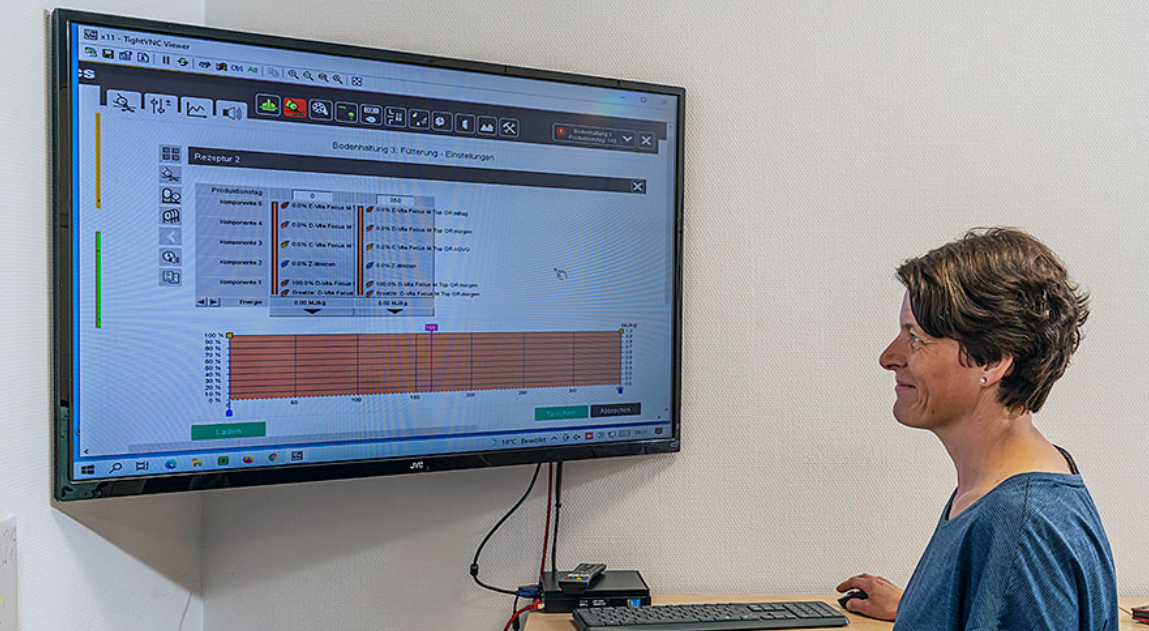
What do you think about the visualisation?
Hans-Albert Funke: I like it very much! You can’t make any mistakes and will easily be able operate the software correctly even without knowing every single function. The system is self-explanatory.
By the way, if I may ask for one thing, I would suggest two small additions to the software.
Which additions?
It would be helpful if the feed intake for feed A and feed B were also displayed in the main overview. The same applies to the laying performance, especially since the software already determines this factor, based on the egg counters.
Thank you for the hint! We will be happy to check this with our developers (see addendum below). One more question about split feeding control: What do you think is the benefit with the greatest added value?
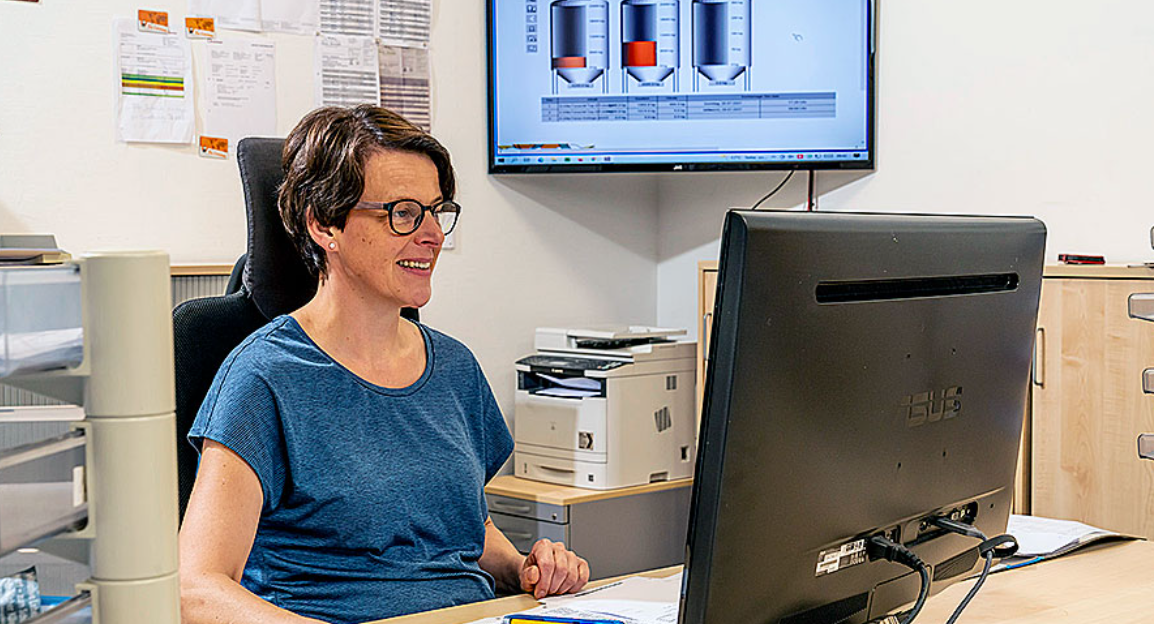
Hans-Albert Funke: How easy it is to operate.
Stefanie Meiners-Funke: That’s the technician speaking. :-) To me, it’s the well-being of the birds. The economic advantages are also a blessing, of course. Why did I not start need-based feeding much earlier?
Christian Kalkhoff: That is very good to hear! What I gather from this conversation is that split feeding control would also be a useful addition to our other control systems.
Thank you for taking the time to talk to us!
Addendum:
In the meantime, the Big Dutchman software developers have implemented Mr. Funke’s request and updated the amacs management system accordingly:
